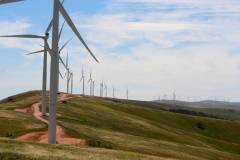
Uncertainty cuts both ways highlights University of Bristol’s Stephan Lewandowsky – if your preferred estimate is at the low end of a range, you’re neglecting similarly likely high end estimates. Image credit: University of Bristol
Waiting longer to act on climate change will cost us more than taking immediate action. It’s a message that’s getting louder and louder, repeated from many sides. In March it was stressed by US Secretary of State John Kerry. In April it was highlighted by the UN Intergovernmental Panel on Climate Change (IPCC)’s latest report. Last month it was underlined by Hank Paulson, treasury secretary under George Bush, hedge fund manager Tom Steyer, and former New York Mayor Michael Bloomberg. This week the Council of Economic Advisors, the agency advising President Obama on economic policy, joined in.
These messages could hardly be any clearer, but still some of us remain uncertain on the need to act. The best argument for waiting until we’re more certain to act is that if climate change turns out to be harmless, our efforts to fight it will be wasted. Even simple things like current weather are enough to sway our opinions, and when uncertain it’s always tempting to feel like we don’t need to do anything. But that’s the wrong reaction to uncertainty on climate change, according to psychologist Stephan Lewandowsky from the University of Bristol, UK.
The researchers have found that greater uncertainty over how much Earth warms in response to our CO2 emissions would actually raise forecasts of average damage costs from climate change. Greater uncertainty also means projections see it as more likely that steps to cut emissions won’t keep the world below warming levels governments have agreed we must avoid. So, if we are unsure whether we can slow the climate juggernaut down before we smash into the wall, we’re better off hitting the brakes earlier. As Stephan explained, ‘uncertainty is no one’s friend’.












